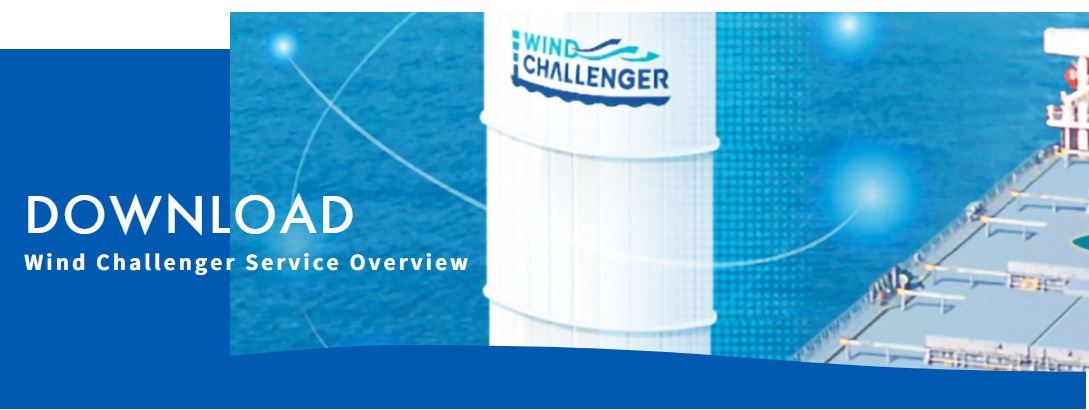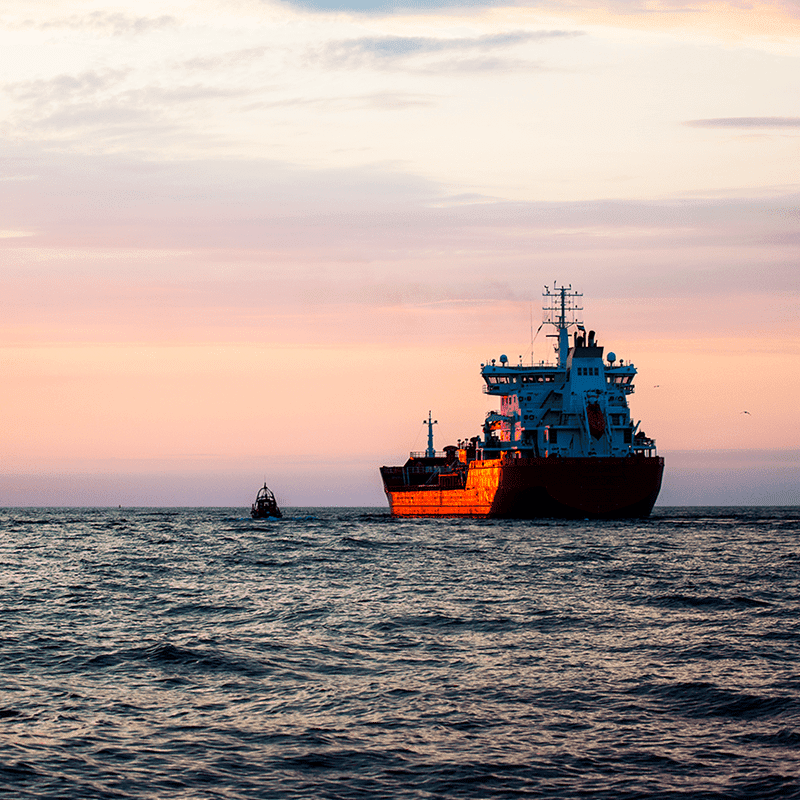BLOG
The Time Will Come When Even the Latest Built Vessels Will Have Sails: Wind Challenger (Part 3)
- Energy
- General Shipping
2024.04.22
In the past two blogs we have discussed the background, challenges, and related technologies in the development of Wind Challenger. This series comes to an end with this article. Please read until the end to see what kind of future MOL is envisioning.
You can find the previous parts of the series here →
Part 1 (Characteristics of the hard sail, etc.)
Part 2 (Background of the development, challenges overcome, related technologies, etc.)
Technological Variations are Being Prepared to Demonstrate Competitiveness as a Shipping Company
The Second Vessel Aims to Put a Smaller Wind Challenger into Practical Use
MOL has set a goal in its "Environmental Vision 2.2" to increase the number of vessels equipped with the Wind Challenger to 25 by 2030 and 80 by 2035. In the global shipbuilding industry, various vessel concepts utilizing wind power are being proposed. In addition to hard sails like the Wind Challenger, there are 'kite methods', 'rotor sail methods', 'soft sail methods', and so on. In other words, the superiority or inferiority of technologies related to auxiliary propulsion devices utilizing wind power is becoming a common factor in determining the competitiveness of shipping companies.
In these circumstances, MOL has quickly put the Shofu Maru into practical use. This is a step ahead of competitors. When evaluating the Wind Challenger as a mechanical technology, as previously described, innovative and existing technologies intertwine exquisitely to produce reliability and stability. Furthermore, as Mizumoto points out, “Whether it's the rotating gear part of the pedestal or the pillar of the expanding sail, there are few moving parts exposed to the outside elements, so it can withstand harsh sailing environments and exposure to tides and winds.” This is also a significant factor.
The 'variation competition' has already begun. The second vessel equipped with the Wind Challenger is already under construction and is scheduled to be completed in June 2024. This vessel is a smaller bulk carrier compared to the Shofu Maru, with a load of 64,000 tons. Therefore, the Wind Challenger to be installed is also a smaller version with a height of 38 meters (approx. 124 ft) and a width of 11 meters (approx. 36 ft) when fully expanded. In addition, it has expanded the use of FRP, and the drive mechanism for expansion and contraction has been converted from hydraulic to electric. That is to say, a lighter commercial model of the Wind Challenger is being prepared.
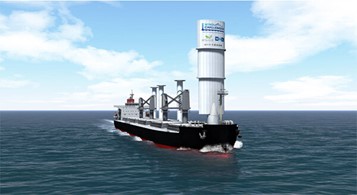 Image of the second vessel equipped with a smaller and lightweight Wind Challenger
Image of the second vessel equipped with a smaller and lightweight Wind Challenger
Even with New Energy Engines, it will be Common to Receive Assistance from Sails
'Wind Challenger has been studied on the premise of improving efficiency by installing multiple units on one vessel. We are considering whether it is possible to install four units on a tanker of the 300-meter (approx. 984 ft) class. We are also preparing two sizes, large and small, and hope that people will first consider installing MOL’s Wind Challenger as an option.' (Wakabayashi). This is also the hope of MOL, and that it is the path forward for shipping companies to achieve zero emissions by 2050, securing their transport competitiveness.
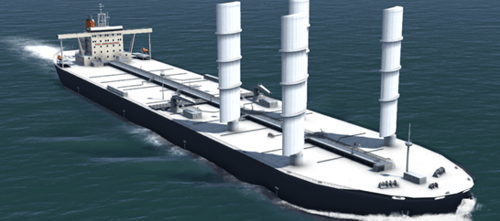 Image of a vessel equipped with multiple Wind Challenger
Image of a vessel equipped with multiple Wind Challenger
Of course, alternative technology competition is fierce with, for example, progress in the development of hydrogen engines that do not emit GHGs. However, Mizumoto, who has been closely watching the Wind Challenger project, says: 'New fuels and engines that use new fuels are certainly attractive. However, it is thought that it will take some time to establish these new technologies, and new fuels are overwhelmingly expensive compared to heavy oil. Inevitably the cost burden will increase, something which cannot be avoided. Also, the marine industry requires a fuel that can be obtained anywhere in the world. This is why the attraction of sails, which use the inexhaustible and free wind as the energy for propulsion, is growing. Moreover, we have collected a large amount of data on Wind Challenger, which is available for future development.'
The words 'Vessels with Sails will become the norm' mentioned at the beginning of this series are very much grounded in the reality of the situation we are in today.
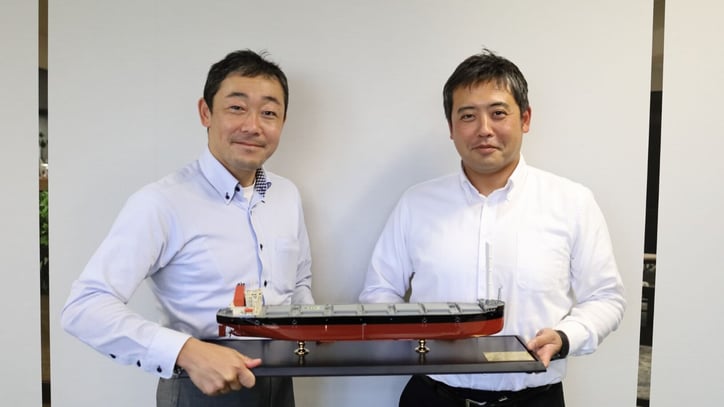
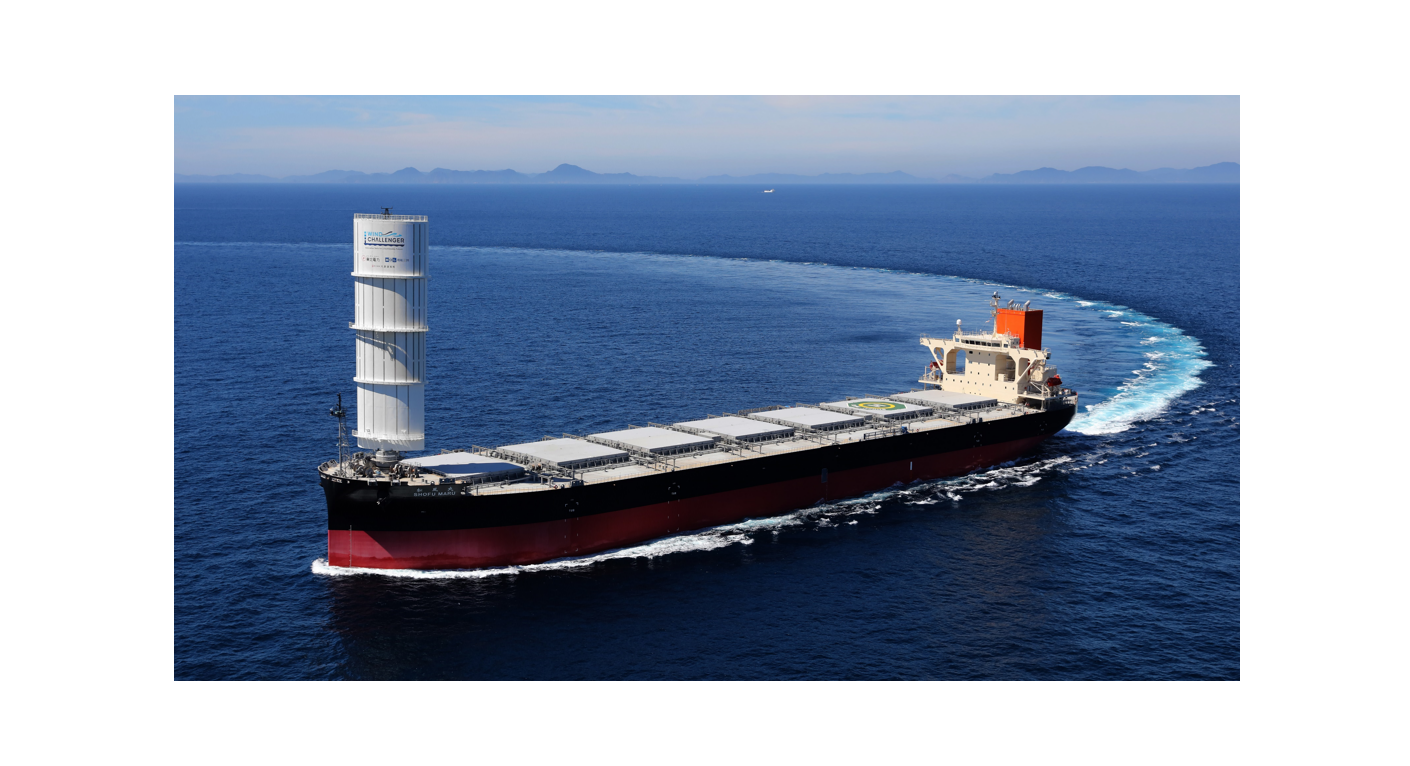
The Time Will Come When Even the Latest Built Vessels Will Have Sails: Wind Challenger (Part 1)

The Time Will Come When Even the Latest Built Vessels Will Have Sails: Wind Challenger (Part 2)


Recommended Articles
2022.07.05
- General Shipping
2021.04.13
- Energy
2023.12.19
- General Shipping
2021.08.07
- Eco Friendly
2025.03.18
- General Shipping
Latest Articles
2025.12.09
- Eco Friendly
- General Shipping
2025.12.03
- General Shipping
2025.11.20
- Energy
- General Shipping
- BLOG
- The Time Will Come When Even the Latest Built Vessels Will Have Sails: Wind Challenger (Part 3)

